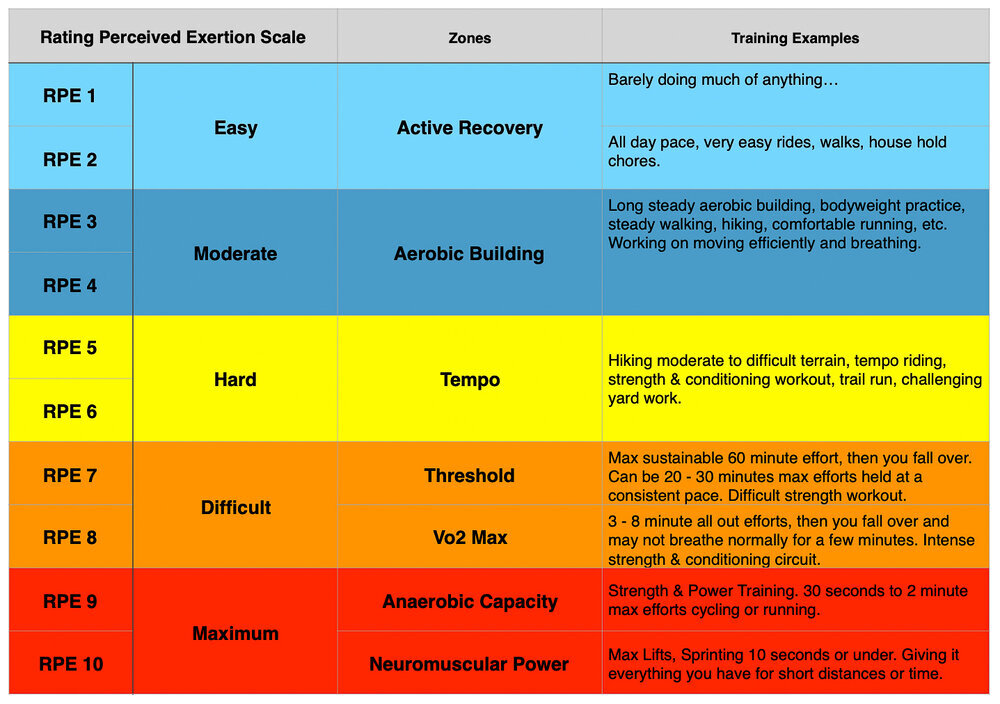These numbers may sounds a lot.
But remember this is low-intensity and may even include walking if you are just starting out.
To put it in perspective, the World Health Organisation recommends 30-60 mins aerobic exercise per day. If you were to do 45 mins per day of walk/run at a very easy pace that would be around 7km per day.
Done 6 days per week adds up to 40km per week and would be very manageable.
If that sounds like too much, you might need to reconsider your running goals in the short-term any focus on building your daily walking volume. There is nothing wrong with that - even some of the elite athletes need to use a walking program when returning from an injury.
To figure out what pace you should be doing your easy runs, we have designed an online calculatorthat can help you.
Running Calculator
You can enter your most recent 3km or 5km time and see the pace range you should be aiming at for your easy runs.
It also gives you an accurate idea of your training zones for specific goals which is super handy.
Knowing and respecting your individual ‘easy’ zone pace is probably the single most important factor for a runner to learn.
Now, if you have just discovered your ‘easy pace’ to be ridiculously slow, then you know you are probably a ‘threshold addict’.
Full disclosure, I am a recovering threshold addict.
It took an intervention and a whole lot of pain for my dull brain to understand the physiology behind staying injury free as a runner.
If you are struggling to reconcile your ‘easy’ running pace, then here is a simple hack:
Your easy running pace is the average pace for your whole run.
So you can still run fairly quickly, but you will need to take some walking breaks.
Are you really a runner if you take walking breaks?
I’m not sure exactly why this belief developed that you’re not really a runner if you take walking breaks.
I would say the major limitation to building volume is refusing to ever take walking breaks.
It’s a belief that is worth letting go of, if you want to transform your running.
Repetitive eccentric loading of muscles and tendons from running is hugely stressful for the body.
Let’s face it - building a resilient runners body takes time and patience.
To put this in context, can you imagine going to a gym and smashing out 10,000 loaded single leg squats in a row without a break? That is the torture you are putting your body through, if you refuse to take walking breaks, especially early on in your running career.
Nutrition
The base phase of training is an ideal time to set up your nutrition plan and I would highly recommend consulting with a sports nutritionist for an individual plan, based on your goals.
The most effective nutritional strategies for athletes include increased intake of protein, carbohydrates and polyphenols.
A consistent finding is that carbohydrate intake during prolonged exercise, whether from drinks or sugar-dense fruits such as bananas or gels is associated with reduced stress hormones, diminished blood levels of neutrophils and monocytes, and reduced levels of inflammation.
Exercise physiologist, David Nieman believes that carbohydrates are the key nutrient bonding exercise and good health and he recommends ingesting them before, during and after running.
Indeed, he notes a whole new science of immuno-metabolism that places glucose and glycogen at the center of healthy immunity as well as being the key to strong endurance athletes.
When runners consume carbs during their long runs, their immune cells “look and perform much better,” says Nieman.
3. How to use this time to build resilience - Discovering your weak links
I’ve long considered running to be one of the best barometers of musculo-skeletal capacity.
No other test can give more information about our body than finding out what happens after 20km of running (a distance which our innate ancestral bodies used to cover frequently).
As physical therapist and strength coach Gray Cook recommends, “First move well, then move often.”
Most of us have some weak links in our body that we may never know until we start to increase demand.
As you’re progressing in training, the harder sessions will ‘test’ your physical capacity and movement foundation.
The benefit of building your low-intensity volume in the initial few months of training is that it can expose weak links in your body, without risking huge strain on your body.
Because there is no pressure to be fast and progress too quickly, in this phase you can take your time to properly address the underlying issue.
Identifying your weak links can sometimes be really easy - it’s the area of your body that is overloaded and painful.
But there is often also a deeper root cause of why a certain tissue is getting overloaded, sometimes not as obvious.
That is where a good Physio can help you do some detective work and identify the more subtle issues that may be contributing.
These issues may be things like:
Free Running Screening
I’ve put together a free screening tool to help runners identify any weak links.
This is a completely free service and my goal is to help as many runners as possible, so please feel free to share with your running friends!
This involves a short set of questions and then 5 physical capacity tests.
As you can probably tell, I’m super passionate about helping runners stay injury free in these challenging times the world is facing.
Having a strong physical foundation is the key to keeping yourself strong and healthy so we can be of support to others.



























